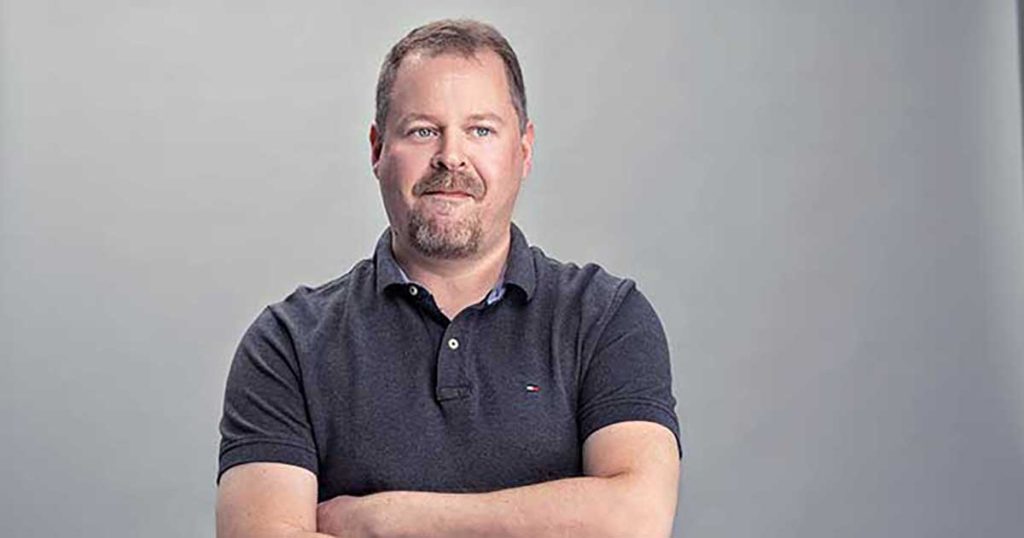
Visma Public, a provider of salary, finance, and human resources management solutions, has been striving to transform its business from traditional project delivery to a provider of Software as a Service solutions. This change necessitates that the sales systems also support the new business model.
Already back in the 1960s, offering software operated on punch cards to its customers, Visma Public has evolved into a company that today provides complete payroll, HR, and financial administration solutions, joining the Visma family in 2018. Over the past few years, the company has shifted from delivering customized projects to becoming a cloud service software partner.
“Put bluntly, in the past, we used to deliver a single project to the client and then pretty much leave them to their own devices. Nowadays, things need to be considered with a more long-term perspective because, if clients feel that a company isn’t developing its operations or offering anything new, they will simply switch to another provider. This has been a major shift from the old ways,” explains Jani Muhonen, Sales and Marketing Director at Visma Public.
Muhonen shares that when he started his current position at the end of 2020, he initially had absolutely no visibility into where things stood with sales.
A few years earlier, the company had replaced its previous CRM system with Salesforce, but the system had been implemented in a rush and was unable to support the company’s business models or processes.
Muhonen assessed that the basic data was in good shape following the switch, but the system was not used as a daily support for practical activities. Instead, it treated more as a mandatory spot for logging information.
“Nobody had actually taken the time to think about what should really be done with the system. It had accumulated a lot of junk,” Muhonen says.
System development with business vision as the driver
In his new role, Muhonen jumped straight into a moving train. The collaboration with twoday Biit began with workshops aimed at getting the basics in order.
“Initially, we clarified the business vision and built an understanding of what the IT architecture should look like in the future. We started with a strong focus on looking ahead. How do we build the sales pipeline, and how does information flow from sales to financial management?”
Around the turn of the year, several workshops were organized where we hammered out a vision for IT development. Besides enhancing the current architecture, we also devised our target architecture. This groundwork allowed us to design a roadmap to steer our system development efforts.
“Clarifying our target state really shone through. We had multiple development projects running simultaneously, so not everyone had an equal understanding right from the start about where we stood and what we were doing.”
A well-built foundation also allowed for a more agile approach.
“It was a good thing that we started with small steps and didn’t try to get everything sorted out at once. So many things have changed along the way that it wouldn’t have worked anyway,” Muhonen assesses.
Fixing the sales pipeline first
The first step of the project was essentially what you’d call a CRM reboot, where the old system was practically rebooted.
The goal was to build an effective pipeline from marketing through sales to billing, and to achieve a 360-degree view of customer relationships, enabling even better customer service. The company started seeing clear results within the first six months.
“Our lead generation has clearly evolved. At the same time, both the lead and sales opportunity processes have been precisely defined, implemented, and put into production. We’ve also enhanced our metrics. Initially, I felt quite blind, not really knowing the nature of our company or where we were headed. Now, this big picture has become much clearer.”
The flow of information also necessitates the construction of integrations. Nowadays, data moves smoothly from Salesforce into systems like Visma Public’s Wintime solution.
For transformation projects, Muhonen has one important lesson to share from the spring.
“It takes time and effort to integrate shared operating models into the everyday life of salespeople.”
“You always start out way too optimistic about schedules and overlapping tasks. If you consider our sales processes, for example, it takes time and effort to integrate common practices into the daily routine of the sales team. It’s simply not feasible if you try to fix too many things at once without allocating enough time to embed these practices into everyday operations.”
Roadmap leads the way
Thanks to the strong groundwork, that is, a roadmap built on the foundation of vision and target state, the future steps are already clear for Muhonen.
In particular, he emphasizes the development of key account management. Its importance becomes even more pronounced as the company increasingly shifts towards providing SaaS services in the future.
“Enriching data is the next big step. As a major new area, we are also adopting the Key Account Management (KAM) model, specifically designed for managing key accounts, which is indeed vital for us.”
Muhonen is pleased with working with twoday Biit.
“I have to say, working with twoday Biit is incredibly fun. It might sound like a strange comment, but in these times of COVID when you’re glued to your computer all day with headphones on, having a collaboration that actually works is really refreshing. All in all, I’m very satisfied with our partnership on behalf of our entire company.”